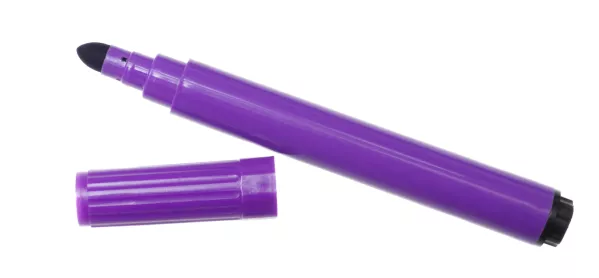Whenever I have to read something on a board - at a restaurant or a conference, say - I adopt a really attractive squint, accompanied by an equally attractive screwed-up face.
It’s a face I recognise often on pupils after I have written something in my best handwriting on the board. I turn back and there they are - necks slanted, eyes on stalks, trying desperately to decipher my scrawl.
Read more: Why we should get rid of pen licences
From the magazine: What’s a whiteboard for, anyway?
Listen: Could Bananarama be the answer to social mobility?
I recall this too from my time at school - in part because teenage vanity prevented me from wearing my glasses.
Nowadays, though, my adult vanity has led to me investing in contact lenses. So, why do I still struggle to see what’s written on boards at restaurants or conferences? It’s not that I went for style over substance with my contact lenses - it’s all down to the colour of the pen, or more accurately, its level of pigmentation.
Why black ink isn’t always best
This is something I have always been aware of ever since my mentor advised me against using red and green board pens to when I was training. There is science underpinning this advice too.
Specifically, green and red board markers can be trickier for students to read because their inks are lighter, compared with more pigmented colours, such as black and blue.
Surely then, the simple solution is to always use black ink? Well, it is not quite that easy.
The contrast of black ink on a white background can be challenging for young people experiencing visual stress (otherwise known as Meares-Irlen syndrome) to read.
According to the Irlen Syndrome Foundation, 15 per cent of the population experience visual stress and up to 46 per cent of students with learning difficulties are impacted. Visual stress can co-occur with other additional needs, such as dyslexia, autism and ADHD.
Therefore, it may be wise for teachers to opt for non-black, but highly pigmented whiteboard pens, such as blue, brown or purple ones. So, is that the problem solved?
Don’t let your pen run out
Not quite. Although I avoid using red and green pens when writing on the board, you also have to be aware of what happens when the ink starts to run out - usually the squinting faces of students will become even more pronounced if this happens.
Don’t let this situation go on for lesson after lesson - make sure you always have fresh board pens to hand so your students are not getting eye strain and can actually read what you’ve written.
This is not small point - what you’re writing is obviously key to their learning, so it’s worth a quick trip to the supply closet to get a new pen as soon as is practical.
Remember to consider the light, too. Natural or artificial light reflecting off the board can be obstructive for all students but those with visual difficulties and/or learning needs are likely to be impacted to a more significant degree.
Finally, if you are unsure, ask the audience.
Students are usually more than happy to give feedback on what works best for them - as we all know.
Gemma Corby is a freelance writer and former Sendco




